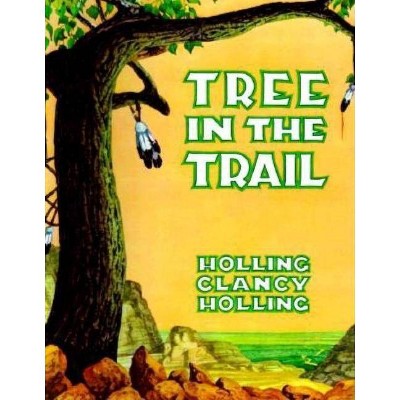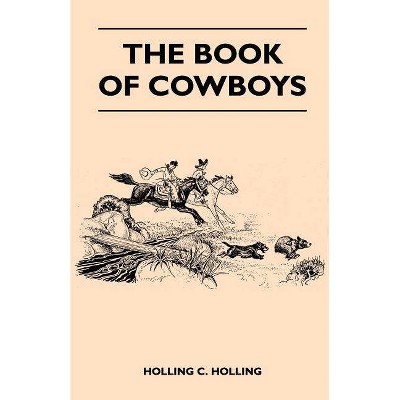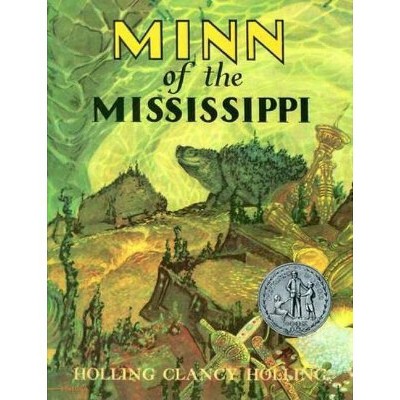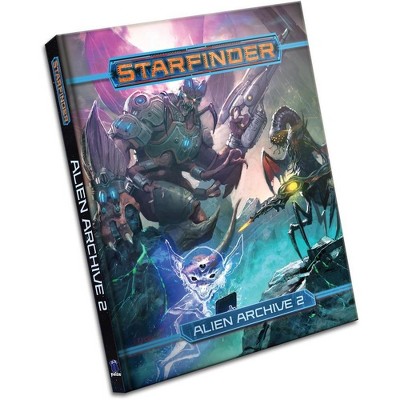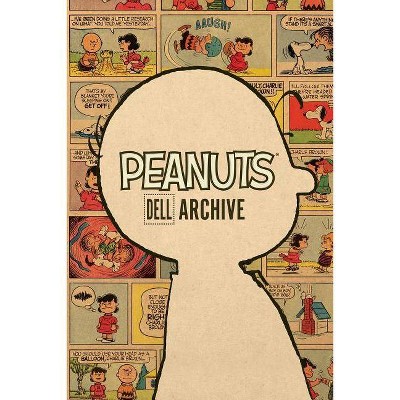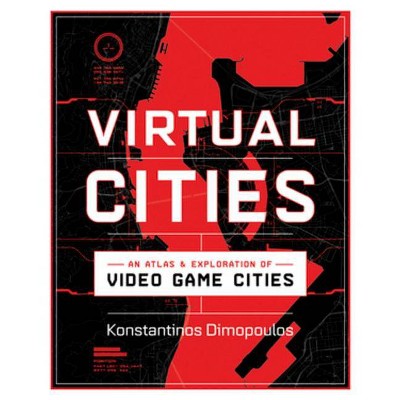Paik's Virtual Archive - by Hanna B Holling (Hardcover)
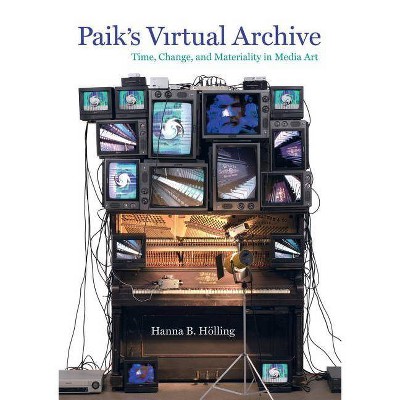
Similar Products
Products of same category from the store
AllProduct info
<p/><br></br><p><b> About the Book </b></p></br></br>"Paik's virtual archive contemplates the identity of multimedia artworks by reconsidering the role of conservation in our understanding of what the artwork is and how it functions within and beyond a specific historical moment. Using examples by Nam June Paik (1932-2006), the hugely influential Korean American artist who is considered the progenitor of video art, the book explores the relation between the artworks' concept and material, theories of musical performance, performativity, and the Bergsonian concept of duration and the parts they play in the conceptualization of multimedia artworks. Hèolling combines her astute assessment of artistic technologies with ideas from art theory, philosophy, and aesthetics to probe questions related to materials and materiality not just in the work on Paik, but in contemporary art in general. Ultimately, she proposes that it is on the basis of the archive--the physical and virtual realm that encompass all that is known about an artwork--that the identity and continuity of such artworks are created and sustained."--Provided by publisher.<p/><br></br><p><b> Book Synopsis </b></p></br></br>In <i>Paik's Virtual Archive, </i>Hanna B. Hölling contemplates the identity of multimedia artworks by reconsidering the role of conservation in our understanding of what the artwork is and how it functions within and beyond a specific historical moment. In Hölling's discussion of works by Nam June Paik (1932-2006), the hugely influential Korean American artist who is considered the progenitor of video art, she explores the relation between the artworks' concept and material, theories of musical performance and performativity, and the Bergsonian concept of duration, as well as the parts these elements play in the conceptualization of multimedia artworks. Hölling combines her astute assessment of artistic technologies with ideas from art theory, philosophy, and aesthetics to probe questions related to materials and materiality, not just in Paik's work but in contemporary art in general. Ultimately, she proposes that the archive--the physical and virtual realm that encompasses all that is known about an artwork--is the foundation for the identity and continuity of every work of art.<p/><br></br><p><b> From the Back Cover </b></p></br></br>"Starting with the wincing crash to the ground of one of Paik's 'proto-new media' works, this book meticulously picks up the pieces, and wrestles the conceptual and the material challenges back into shape. A spirited and useful analysis for ensuring a lively future for media art. Decidedly un-dusty."--Beryl Graham, Professor of New Media Art, University of Sunderland <p/> "This book makes an invaluable contribution to the field of preservation and media art history by using the works of Nam June Paik--one of the pioneers and most important figures of media art--to philosophically and practically rethink approaches to media art conservation. Hölling reconsiders concepts of the conservation object in light of the emergence of digital media art, which has reframed our understanding of (im)materialities, time, change, and the archive. In highly original ways, the book addresses how transformations of multimedia artworks over time affect their behavior, their presentation and the ways in which audiences engage with them. Hölling brings unique expertise to the subject since she has not only thoroughly researched the history of Paik's oeuvre but also actively participated in the conservation and curation of his work."--Christiane Paul, Adjunct Curator of Digital Art/Associate Professor, School of Media Studies, The New School <p/> "Developing strategies to preserve and ensure access to electronically encoded information is one of the major challenges of our era--in art, and in the culture at large. Hanna Hölling's wide-ranging study is essential reading for its insights regarding the ongoing interpretation and updating necessary to address the impact of technological change on Nam June Paik's work and for what this process tells us about the inherent fragility of all aspects of the modern archive."--Martha Buskirk, Professor of Art History and Criticism, Montserrat College of Art <p/> "It is wonderful to see a new generation of media and art historians offering a fresh view on this global artist. Hölling is one of the leading scholars helping us to understand Nam June Paik's work in the digital age."--Wulf Herzogenrath, art historian and curator <p/> "Time is slowly erasing the work of entire generations of media artists from our potential art history. The loss is irreparable and urgent action is needed. Fortunately, Hanna Hölling's excellent research will guide us through this darkness!"--Rafael Lozano-Hemmer, media artist <p/> "The restoration and the conservation of media art is one of the greatest challenges for the future of our culture. Hanna B. Hölling's compelling book is one of the most important contributions to this subject."--Peter Weibel, Chairman and CEO ZKM Centre for Art and Media in Karlsruhe, Germany, Professor at the University of Applied Arts, Vienna <p/> <br><p/><br></br><p><b> Review Quotes </b></p></br></br><br>""How do we care for the increasing number of artworks that challenge previously accepted notions of time and space? Hanna Hölling's new book is an ambitious and clear-eyed attempt to provide an answer to that question, calling for a fundamental rethinking of curatorial and conservational notions of time and change in media artworks. . . . And yet, as Hölling makes clear, there is no going back when it comes to Paik. . . . Her combined museological and academic outlooks uniquely shape <i>Paik's Virtual Archive</i>, a book that will likely become required reading in curatorial and preservation graduate programs, and which will also be of keen interest to scholars in the fields of modern and contemporary art and media studies."-- "The Art Bulletin"<br><br>"As an Art Historian and Conservator, Hölling offers a deep and lucid meditation on ephemerality that is both theoretical and practical. . . . She draws from a range of European theorists to offer her post-structural view of the archive as a place of potentials: 'divorcing the archive from its exclusive "pastness," one might conceive of the museum archive as a place where conservators and curators undertake the process of de - and re-activating artwork. . . . Hölling provides a compelling rationale for not dismissing attempts to re-imagine the artist's concept that makes sense for precarious digital works that may gain a new, different life separate from their original coded existence."-- "Visual Studies"<br><br>"Hölling's explanations...show how the practice of media art is integrated into the institutional conventions on the one hand, and how it can cause an institutional structural change on the other. The study is characterized by the fact that it not only describes the current change, but also makes theoretical suggestions in order to grasp the changing work identity of a multimedia installation between storage and presentation. Hölling's book also provides a fundamental access to the current debate within the contemporary restoration discussion, which has so far hardly been received in the German-speaking context. . . . Because, as Hölling shows convincingly, these works are constantly being reconstituted in the context of conservation practices and are accordingly incomplete."-- "Kunst Chronik"<br><br>"In a memorable opening to <i>Paik's Virtual Archive: Time, Change, and Materiality in Media Art</i>, conservator and scholar Hanna Hölling recounts how she received the devastating news that Canopus, a laserdisc video work by Nam June Paik, had crashed down from a wall at her then-workplace. By taking this and other Paik "multimedia installations" as the book's narrative thread- originally her PhD thesis-Hölling generously unpacks her theme: How does the identity of a multimedia artwork persist through every act of conservation, every replacement or renewal, every redisplay, and every re-interpretation, especially given its inexorable material decay along the way? . . . She hints at a radical future where any difference between art and archive become more and more equivocal in terms of authorship, curation, and preservation."-- "Journal of the American Institute for Conservation"<br><br>"The author does not only offer an analysis of the installations in the traditional context of conservation of works of art, that is to say in the conditions of observation, measurement and analysis. Rather, it seeks to understand their conception in a regime of cultural, scientific and dynamic relationships. The book takes its originality from the museographic approach, which is broken down into three parts: the first, "Concept and Materiality", where artistic and performative media are mentioned; the second, "Time and Changeability", which deals with questions of time and conservation; and the third, "Archive and Identity", where the concepts of the material and immaterial archive are advanced, with archival and museographic implications." -- "Critique d'art"<br><p/><br></br><p><b> About the Author </b></p></br></br><b>Hanna B. Hölling </b>teaches material culture, cultures of conservation, and postwar art history at the Department of History of Art, University College London. She was previously Andrew W. Mellon Visiting Professor, Cultures of Conservation, at the Bard Graduate Center in New York. Her research has been supported by Terra Foundation for American Art, Getty Foundation Residential Grant, Swiss National Science Foundation, and the Dutch Research Council. Among her publications are <i>Revisions--Zen for Film, </i>and co-edited volume <i>Th</i><i><i>e</i> Explicit Material: Inquiries on the Intersection of Curatorial and Conservation Cultures. </i>
Price History
Price Archive shows prices from various stores, lets you see history and find the cheapest. There is no actual sale on the website. For all support, inquiry and suggestion messagescommunication@pricearchive.us


